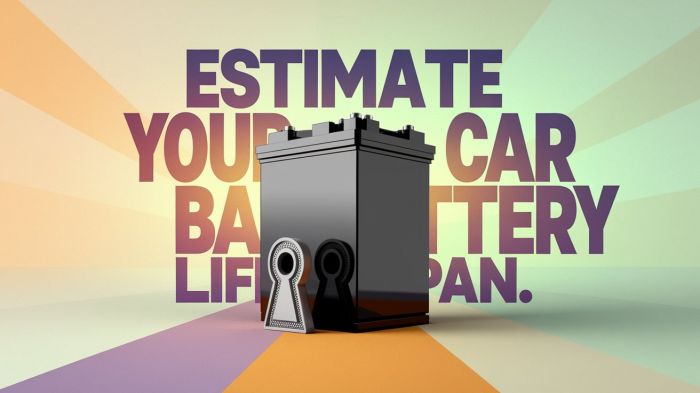Jeremy Clarkson - who we're sure you're all familiar with - once said: A turbo: exhaust gasses go into the turbocharger and spin it, witchcraft happens and you go faster.
Turbo problems highlights
- Level of importance:Medium
- Commonreasons:Mileage, age, poor lubrication, internal damage, aggressive use
- DIY inspection:Possible but may be complicated
- DIY repair:Sometimes, possible
- Price for repair:$350 - $800
- Can you drive?In most cases, yes
- Ways to fix:Replace the parts thatare diagnosedto be faulty

What exactly is a turbo?
The use of a turbocharger, which is often shortened to just turbo, is a type of forced induction method that uses the exhaust gases of an internal combustion engine to compress the intake gas and produce more power and torque.
To make this explanation even easier to understand, we are going to put it this way: the exhaust gases that are normally eliminated through the exhaust manifold and through the rest of the exhaust system, this time drive a turbine that spins a compressor which forces more air into the combustion chamber. More air means that more fuel can be injected each time and that results in more power without extra engine displacement.
This means that instead of wasting exhaust gases into the atmosphere, they are used to make the engine more efficient and more powerful. Quite clever, right? Now that you have a basic understanding of how this so-called sorcery works, let's talk about one of its common faults, more specifically, blown turbocharger seals.
We're going to talk about what they are and how they work, how to tell when they're at fault and how to solve your problem.
What are turbo seals?
First things first, turbocharger seals are not your regular O-rings or gaskets found in various components of your engine. They are split rings made out of heat-resistant steel that have a very small gap at the ends. Every turbocharger manufacturer has a very specific minimum and maximum values for these gaps that are determined by their expansion caused by heat.
These split rings are there to seal the two ends of the center housing rotating assembly, which is very necessary since turbochargers have to deal with high temperatures, high speeds, and very small clearances that are required for normal operation.
What is important to know about them is that they do not seal oil. Their purpose is to prevent the boost from the compressor side and the pressurized exhaust gas on the turbine side from entering the bearing housing.
Why do they fail?
Many times, people believe that the reason for high oil consumption or blue smoke coming out of the exhaust is faulty turbo seals, which is highly unlikely. Bearings will usually fail first and only after that the seals will start leaking.
Also, since the seals are made out of steel and not rubber, they will not degrade with time if not used and are left sitting in a box, for example. To put it short, the seals themselves rarely fail and the oil leaking from the turbocharger is just a symptom of another problem that is waiting to be fixed.
Here are some of the issues that could cause your turbo to leak oil:
- Oil contamination - This can be caused by a few reasons, such as incorrect oil for your engine, contamination due to prolonged service intervals, or a faulty crankcase ventilation system. Contaminated oil could also lead to blocked passages that will eventually starve the turbocharger of oil and will therefore be left with no lubrication.
- Clogged air filter - Yes, you've read that right. A simple and cheap part like an air filter can cause big problems if not replaced regularly. A clogged air filter means a high intake resistance which could cause the oil to be pulled from the turbocharger through the impeller and then infiltrate the charge air line.
- Residual oil - After replacing your faulty turbocharger with a new one you might be in for a big surprise when you notice that there's still blue smoke coming out of the exhaust. This is caused by residual oil that was previously pushed into the charge air line and into the charge air cooler. These parts should be thoroughly cleaned or replaced when installing a new turbo.
- Not letting the turbocharger cool down - If you find yourself turning the engine off immediately after a long or spirited drive, you might be surprised that this is one of the main reasons seals might fail. How? It's very simple. As soon as you turn the engine off, the oil will stop flowing and harden inside the seal, thus shortening its lifespan.
What can failure lead to?
If the seal on the turbine side fails, the excessive leakage of gas into the bearing housing will rapidly degrade the oil that is used to lube the rotating assembly and end up increasing the oil sump and crankcase pressure, if not vented as it should.
This, together with shaft end-play and a restricted or even clogged oil drain will eventually lead to oil not draining into the sump as it should and returning into the compressor housing, then leaking past the seals. That would be the source of your blue smoke, as the oil is burned together with fuel.
Turbochargers are required to have good lubrication at all times and should there be a lack of it, things will start to get nasty very soon. A rather unpleasant whining noise will indicate the failure of the bearings, which will also damage the shaft, wheels, and even housing.
The end-play aforementioned will cause the wheels to make contact with the housings, eventually destroying the turbocharger and pretty much robbing your engine of all of its power.
How to avoid the problem?
Of course, a turbocharger will never last as long as an engine, but there are a few things that you could do to extend its lifespan. Don't worry, there's no rocket science involved. It's simply regular maintenance and careful driving.
- Regular services - One of the most important things you could do to extend your turbocharger's and also engine's lifespan is to change your oil and filters regularly. This helps to make sure that the oil doesn't get contaminated because of normal wear of components inside the engine and the filters don't get clogged with various foreign objects that could eventually lead to more severe damage.
- Allow the turbo to cool down - Remember to always let your car idle for another two or three minutes after driving for a long period or after putting your engine under a lot of stress.
- Avoid hard acceleration with a cold engine - This doesn't allow for proper oil flowing and can cause insufficient lubrication.
- Avoid excessive idling - While it is important to let the engine idle for a few minutes for the turbocharger to cool down, you shouldn't be doing it for too long, as it could cause the turbine to create a vacuum and burn oil since it will leak past the sealing ring. This might make you think that your seals are faulty, when, in fact, it's just a poor driving habit that is causing your issue.
- Excessive turbocharger use - When used for an extended period at maximum power output, they tend to get very hot and, as with every component, too much heat will shorten their lifespan. Using your car on the track, full throttle at low RPM in high gears and brake boosting are all very demanding of your turbo, so remember to know where to stop.
As you might have realized, avoiding faulty seals basically means taking care of the turbocharger itself.
How to repair damaged seals?
When it comes to taking care of this issue, you only have two options. The first one would be replacing the turbocharger with a brand-new one, but this can be very expensive. The other option would be rebuilding your current turbo and replacing only the damaged parts, such as the seals, but, as always, there's a catch.
Replacing the seals is not like replacing any other gasket or O-ring, because the turbocharger itself needs to be taken apart, and while you may be able to do this at home, the really difficult part is putting everything back together.
They work with very small and specific tolerances and even the slightest bit of imbalance could destroy the entire assembly, which is why you have to send your turbocharger to a shop that has special tools for the job. They will disassemble it, determine which parts can be used again, balance everything, and finally test the newly rebuilt turbocharger.
The good news is that such shops are very common in this day and age where turbo cars are pretty much everywhere and have been for quite some time. Some of you might say that there is a third, and probably even cheaper way, and that would be to buy a second-hand turbo.
That is right, but this can be a bit of a gamble since you will never know for sure what's the actual state of the part you've just bought. It might last you for another decade or for another day, you may never know.
Can you drive your car like this?
In a word? Yes. But we only recommend you to do so to the nearest shop that can take care of your issue. Driving for a long period will not only become very annoying because of the lack of power, higher fuel, and higher oil consumption, but it could also damage other components and you definitely don't want to spend more money than you already have to.
About the authors
The CarAraC research team is composed of seasoned auto mechanics and automotive industry professionals, including individuals with advanced degrees and certifications in their field. Our team members boast prestigious credentials, reflecting their extensive knowledge and skills. These qualifications include: IMI: Institute of the Motor Industry, ASE-Certified Master Automobile Technicians; Coventry University, Graduate of MA in Automotive Journalism; Politecnico di Torino, Italy, MS Automotive Engineering; Ss. Cyril and Methodius University in Skopje, Mechanical University in Skopje; TOC Automotive College; DHA Suffa University, Department of Mechanical Engineering






Add comment